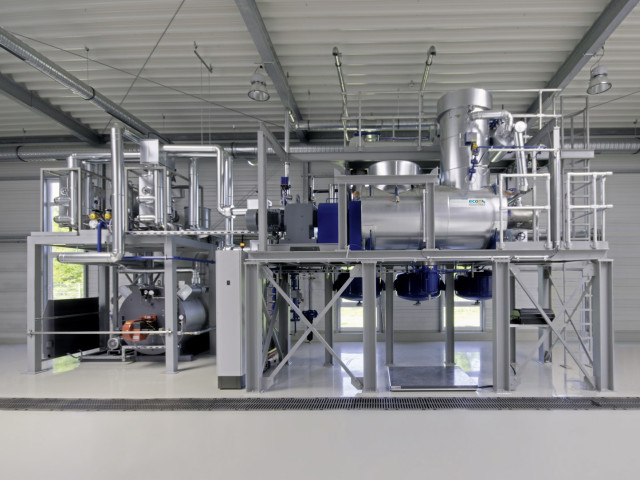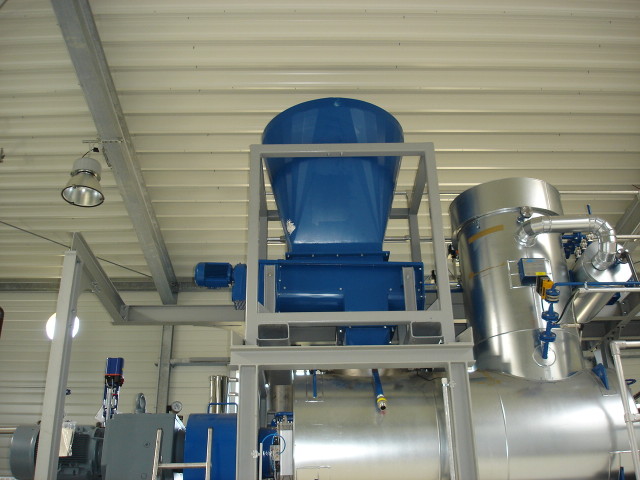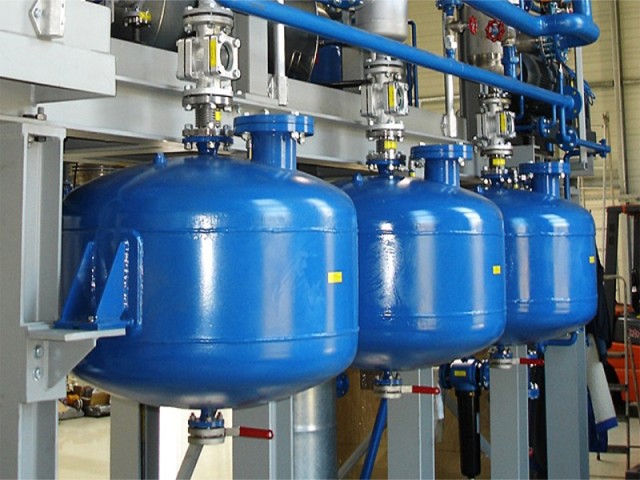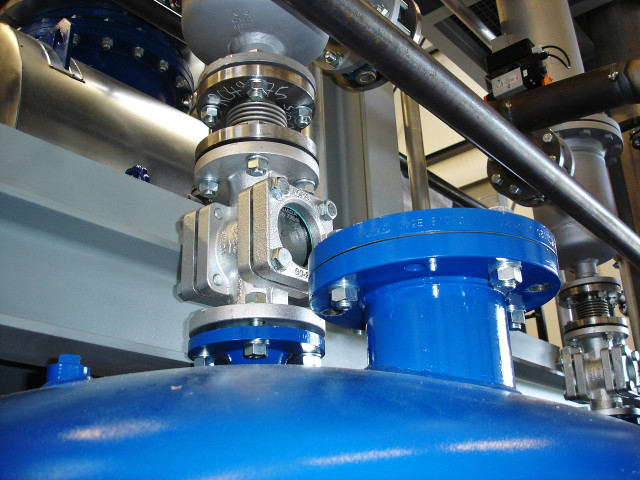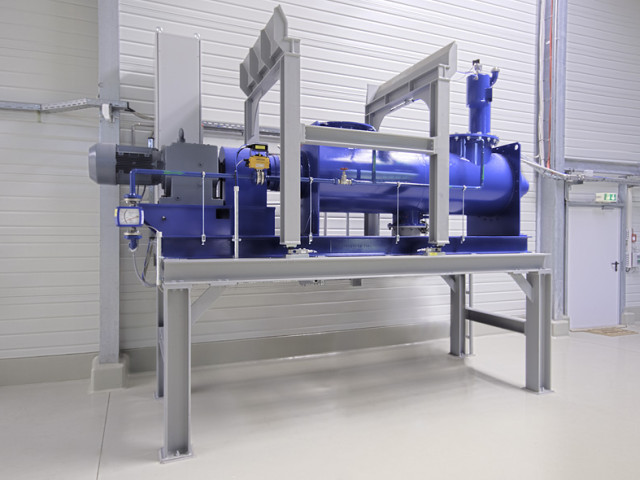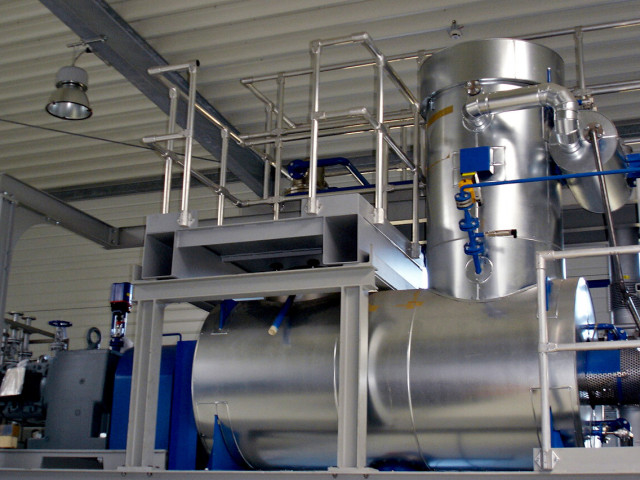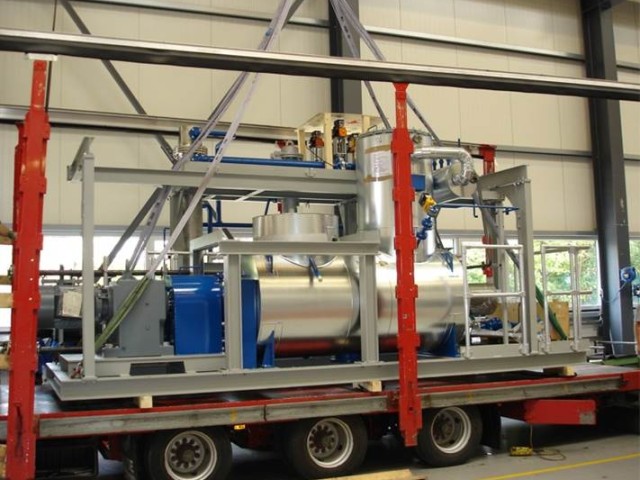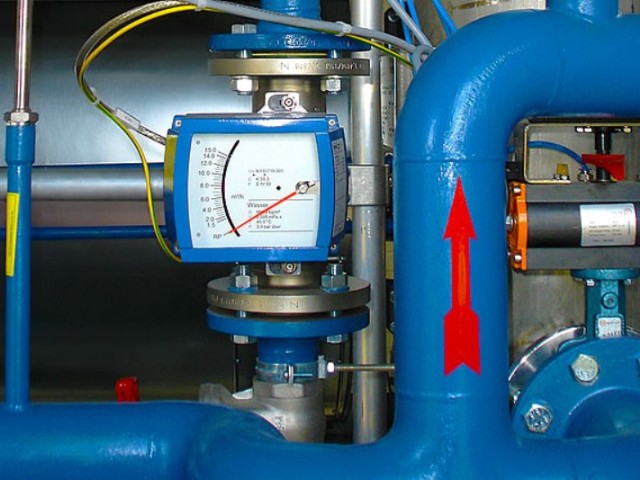Mercury recovery from industrial waste and toxic residues of natural gas drilling
econ industries’ client in the east of Germany is one of the few specialized companies in Europe for the treatment of mercury contaminated waste. Typical input material for this type of treatment is sludge from the natural gas industry or other residues from chemical processes, i.e. contaminated filter cake from waste water treatment.
Since 2002 the client has been operating a VacuDry® plant specially designed for the treatment of mercury contaminated sludge including NORM (Natural Occurring Radioactive Material) and doubled its capacity by ordering a similar unit in 2009.
The primary aim of the thermal processing plant is to remove benzene, toluene or lube oil and to recover the mercury content for further recycling. The treated NORM solid residue having low natural radioactivity is immobilized with chemical polymers before final disposal.
Design characteristics
- Optimal accessibility for maintenance and repair work
- Additional flushing device for cleaning of piping system
- Due to natural occuring radioactivity inside the product, best possible dust lining necessary
- Special vacuum tight discharge system for separation of liquefied lead contents during process
- Separately recovered contaminants by fractional condensation Two condensate lines for highest plant availability

